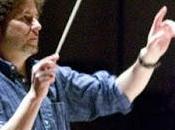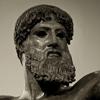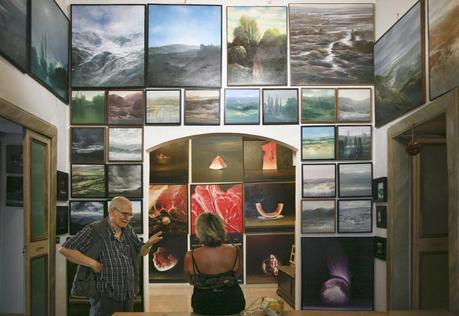
Il giovanissimo Luigi Frappi aveva una passione per la fotografia e a 18 anni con il suo libretto di risparmio si comprò la mitica Canon Pellix. Riteneva che un'immagine ottenuta con la macchina fosse già perfetta, nel senso che conteneva ed esprimeva senza interventi già tutti i possibili significati.
Invece poi si è dedicato alla pittura con la spontaneità di un bambino, sulla scia del padre, eccellente pittore, e i suoi pennelli sono riusciti a rendere sulla tela la sua immaginazione, quello che l'obiettivo non avrebbe mai potuto fare.The young Luigi Frappi had a passion for photography and when he was 18 years old, he bought the legendary Canon Pellix with his savings. He believed that an image obtained with a good camera was perfect, in the sense that it contained and expressed without interventions all its possible meanings.
Afterwards he devoted himself to painting with the spontaneity of a child, in the wake of his father, an excellent painter, and the brush made on the canvas what a camera could never have done.
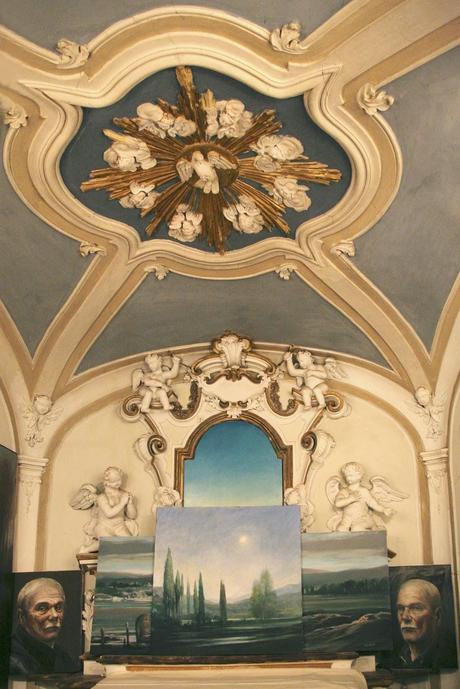
Dalle pareti della sua straordinaria casa-studio di Bevagna il suo viso enigmatico ci osserva dai numerosi autoritratti, nei quali l'artista tende a prosciugare l'immagine dal colore, in una sottrazione progressiva verso l'essenzialità intensa dei tratti: alla ricerca forse dell'anima, lo spirito scarnificato ma vitale, dietro le parvenze.From the walls of his home-studio in Bevagna his enigmatic face watches us in numerous self portraits, where the artist tends to drain the color from the image, in a progressive subtraction towards the essentiality of intense research: perhaps towards the soul, the stripped but vital spirit, behind the appearances.

Nei paesaggi invece il colore è sovrano. I suoi paesaggi dove l'uomo è sempre assente sono spesso mossi da un vento che sembra investire chi li guarda, sembrano emettere sommessi fruscii di fronde, cinguettii garruli e distanti, risucchiano l'osservatore al loro interno. Ma in realtà è l'osservatore a riconoscerli dentro di sé come indefinibili emozioni.On the other hand in the landscapes, color is sovereign. His landscapes, where man is always absent, are often run by a wind that seems to invest those who watch them; they seem to emit whispers, rustling of leaves, far distant twitters, drawing the viewer inside them. But it is actually the observer to recognize them within himself as indefinable emotions.
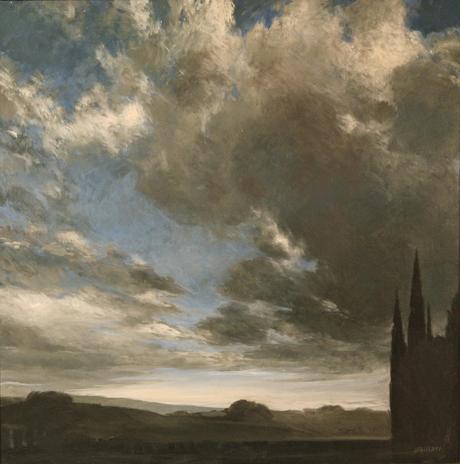
Frappi condivide consapevolmente l'estetica dei Romantici, come ha sottolineato Francesco Nuvolari nel suo bellissimo saggio: la comunione con la natura è il senso vero dell'esistere umano; il paesaggio disegnato dalla luce bianca della luna o dai toni caldi del sole è lo specchio dell'anima. E l'arte nasce solo dal cuore.Frappi knowingly shares the aesthetics of the Romantics, as pointed out by Francesco Nuvolari in his wonderful essay: communion with nature is the true meaning of human existence; the landscape designed by the white light of the moon or by the warm tones of the sun is the mirror the soul. And art comes only from the heart.
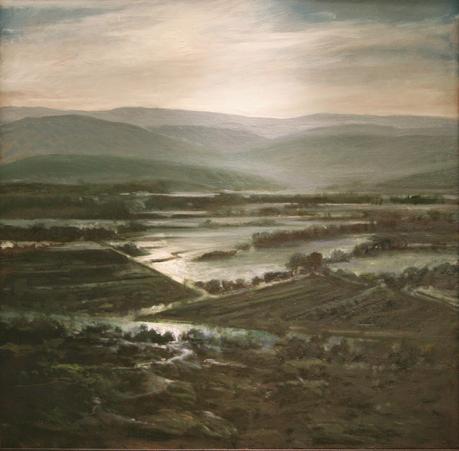
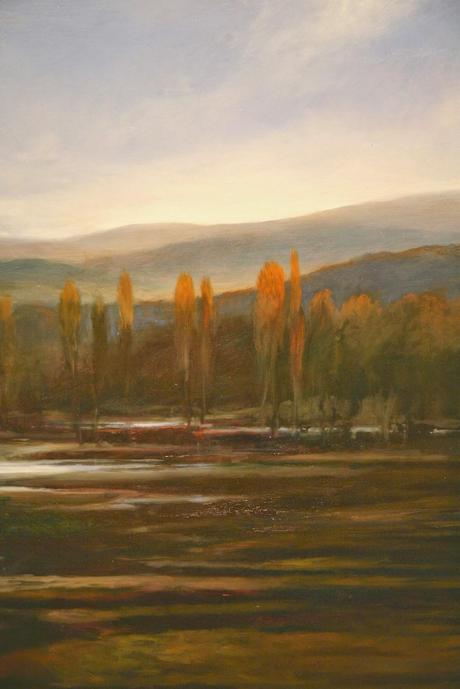
Gli storici della letteratura hanno messo in relazione la nascita del Romanticismo con la decadenza dell'economia agricola a favore di quella industriale che comportò la formazione delle “masse” inurbate nei grigi sobborghi con file di case tutte uguali a servizio delle nuove formidabili cattedrali, le fabbriche.
Allora si strappò il plurimillenario rapporto di interdipendenza tra l'uomo e la natura e le sue stagioni che si uniformarono da allora in poi ad una sola, costante e rumorosa, quella del lavoro e della città.
La natura trovò rifugio nel cuore e nella fantasia, gli alberi diventarono sempre più grandi, i colli, i sassi, i fiumi si tinsero d'infinito, echi misteriosi risuonarono nelle valli percorse da sogni evanescenti.Historians of literature have linked the birth of Romanticism with the decline of agricultural economy in favor of industry which resulted in the formation of the "masses" in gray urbanized suburbs with rows of houses all alike in service of new and formidable cathedrals, the factories.
That tore the plurimillennial interdependent relationship between man and nature and its seasons which, from then on, conformed to a single, constant and noisy season, that of work and town.
Nature found refuge in heart and imagination, trees became larger and larger, hills, rocks, rivers became dyed in infinite, mysterious echoes resounded in valleys traversed by evanescent dreams.
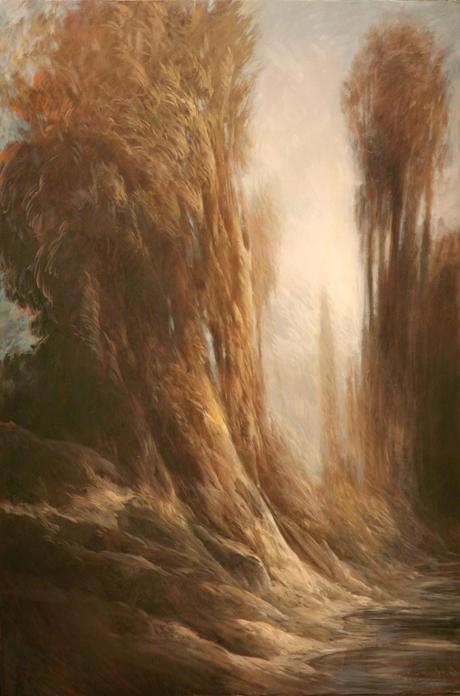
Frappi non dipinge mai dal vero i suoi paesaggi ma li trova nel suo immaginario. Eppure sono reali. Ognuno direbbe di aver visto questa o quella valle frondosa, quei pioppi che riflettono il tramonto con le foglie d'argento, quei colli disegnati dal sole mattutino che li individua nella nebbia, spazi di grande bellezza che il pennello di Luigi Frappi evoca ma non indica, creando ritagli di infinito. Frappi never paints his landscapes from life but finds them in his imagination. Yet they are real. Everyone seems to have seen this or that leafy valley, those poplars and their silver leaves in the sunset, those hills designed by the morning sun in the fog, unspoiled areas of great beauty that Luigi Frappi's brush evokes but does not indicate, creating cutouts of infinity.
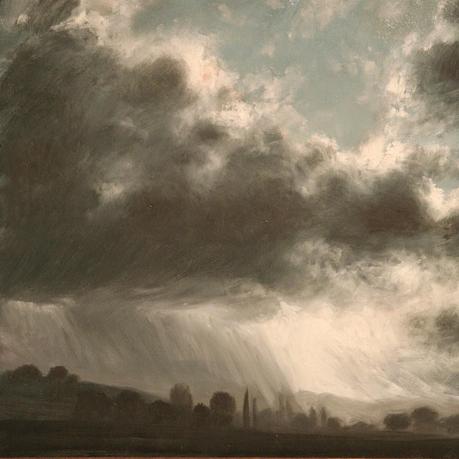

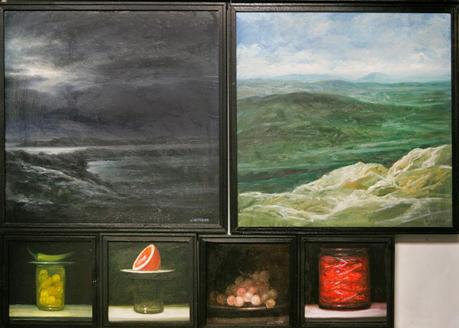
C'è un altro filone in cui l'estrema maestria di Frappi si esprime: le nature morte. Anche in queste l'uomo è assente ma se ne intuisce l'implicita esistenza. Perché il grappolo d'uva o lo spaccato di cocomero sono appoggiati su un tavolo, i pezzi di carne di manzo sono appesi a ganci di macellaio, i pomodori secchi e le olive sono racchiusi, direi prigionieri, in barattoli di vetro. La luce li isola dalla penombra intorno come facendo loro un interrogatorio di “terzo grado”. There is another area in which the great skill of Frappi opens out: still lifes. Here too man is absent, but his existence is implicit. Because a bunch of grapes or a cross-section of watermelon are placed on a table, pieces of beef are hanging from butcher hooks, sun-dried tomatoes and olives are enclosed, I would say prisoners, in glass jars. The light isolates them from the shadows around them as doing a "third degree"interrogation.
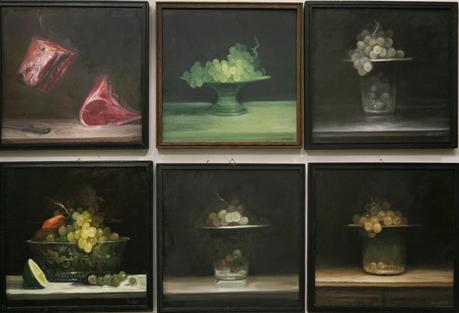
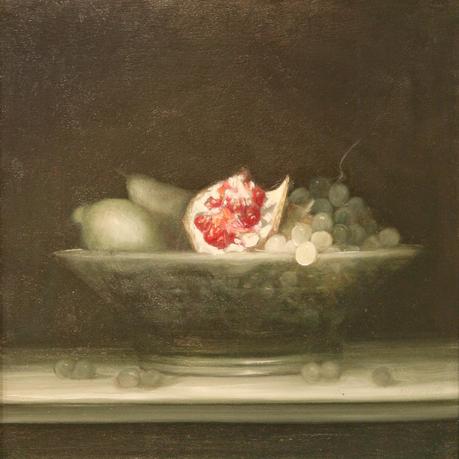
Gli oggetti ritratti, come attori su un palcoscenico, interpretano la loro bellezza e la loro prigionia, la loro solitudine e il loro lacerato silenzio. Così il nesso che appariva incomprensibile tra i paesaggi incantati e vivi e le nature morte viene in superficie.
L'artista vive attraverso queste ultime la condizione del quotidiano esistere, attraverso quelli la grazia agognata, la dolcezza, la purezza e la magia.The portrayed objects, like actors on a stage, interpret their beauty and their imprisonment, their loneliness and their torn silence. So the link that seemed incomprehensible between Frappi's enchanted lively landscapes and his pitiless still lifes comes to the surface.
Through the latter, the artist lives the condition of everyday existence, while through the former he lives the coveted grace, sweetness, purity and magic.
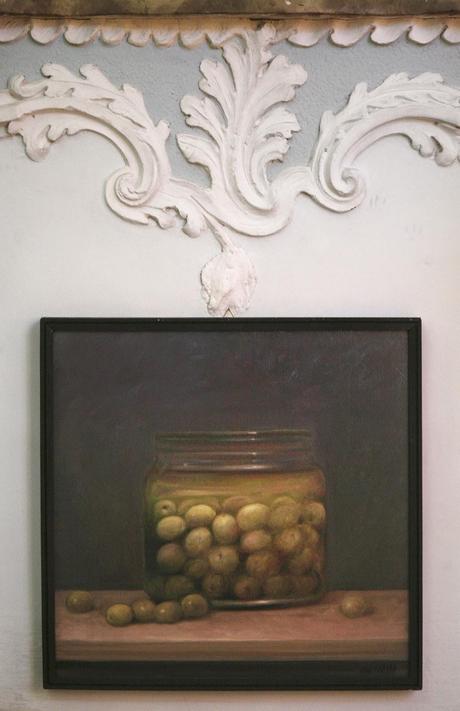
Passione antica e primaria, la pittura è per Frappi la strada innata e irrinunciabile, il nastro lucente che attraversa terre e spazi sempre profondamente autentici e poggia sui pilastri del cuore e della mente.Long-standing and primary passion, painting is for Frappi his innate and inalienable road, the shiny belt that crosses deeply authentic lands and spaces and rests on the pillars of heart and mind.
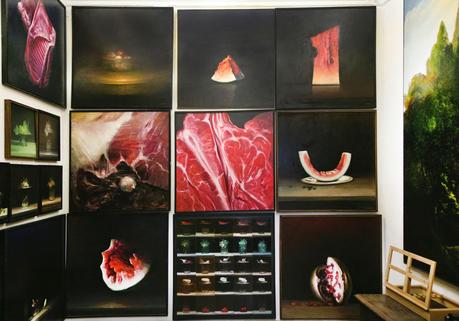
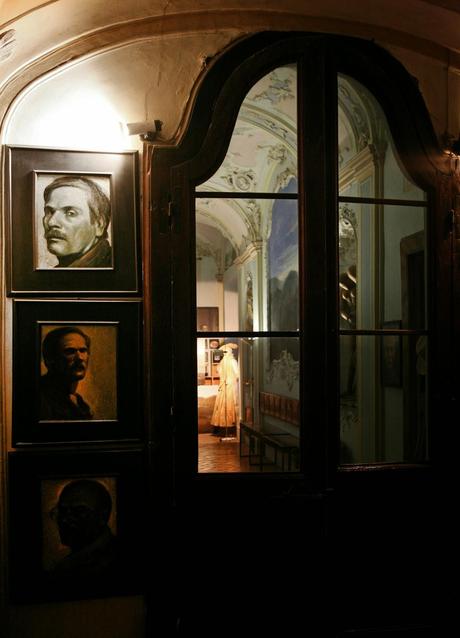
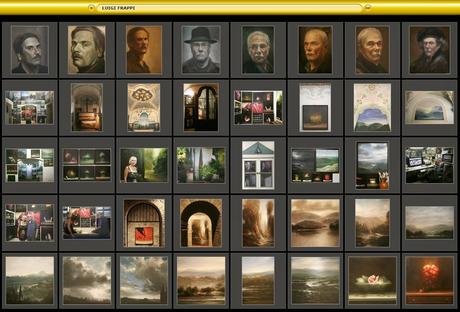
Cliccare per vedere l'album interattivo con tutte le foto
Le fotografie (di Aurelio Stoppini) sono state scattate nella casa-studio del maestro a Bevagna e alla mostra "Il rumore dell'acqua" tenutasi nel 2010 al CERP di Perugia (Rocca Paolina).Su Luigi Frappi abbiamo già pubblicato su Arte nella Vita un breve articolo nella sezione Art Flashes, dedicato alla sua mostra perugina "Carnem Levare" presso il Ristorante NàNà (la mostra è tuttora in corso).
Luigi Frappi vive e lavora in Umbria a Bevagna (PG)Collegamento al suo sito web
![[Recensione] quadro dipinto Massimo Bisotti](https://m21.paperblog.com/i/289/2894828/recensione-il-quadro-mai-dipinto-di-massimo-b-L-5i0jJD-175x130.png)

